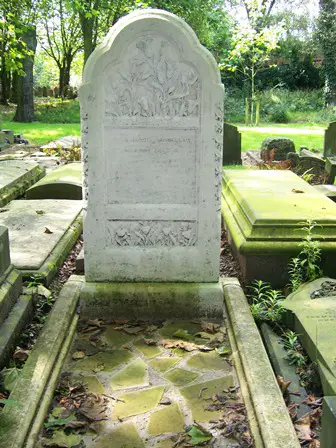I knew The Grove as my grandfather's house. As a child, I practised on my bicycle around the garden, and in a cold winter we could occasionally skate/play on the ice on the pond.
When my grandfather died, the house and the land had been promised to the City many years before. It was stipulated that the house should be put to some kind of community use, but was not considered suitable for anything of the kind - hence it was pulled down and, by agreement with the family, the care home was built on the vegetable garden instead.
That little panelled room was most carefully dismantled, but unfortunately the craftsman who did that died before it could be reassembled at the V & A - for which reason it was a considerable number of years before it made its appearance there!

